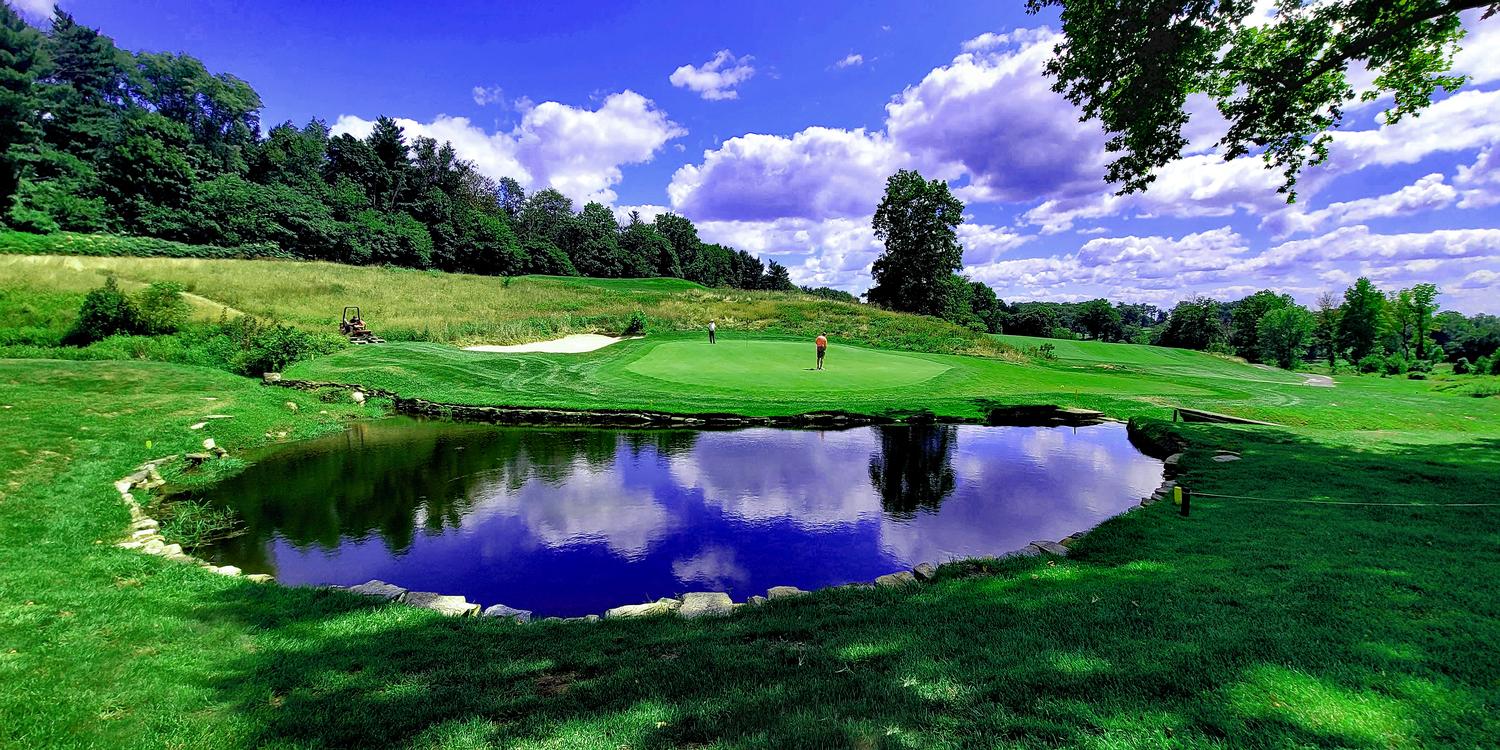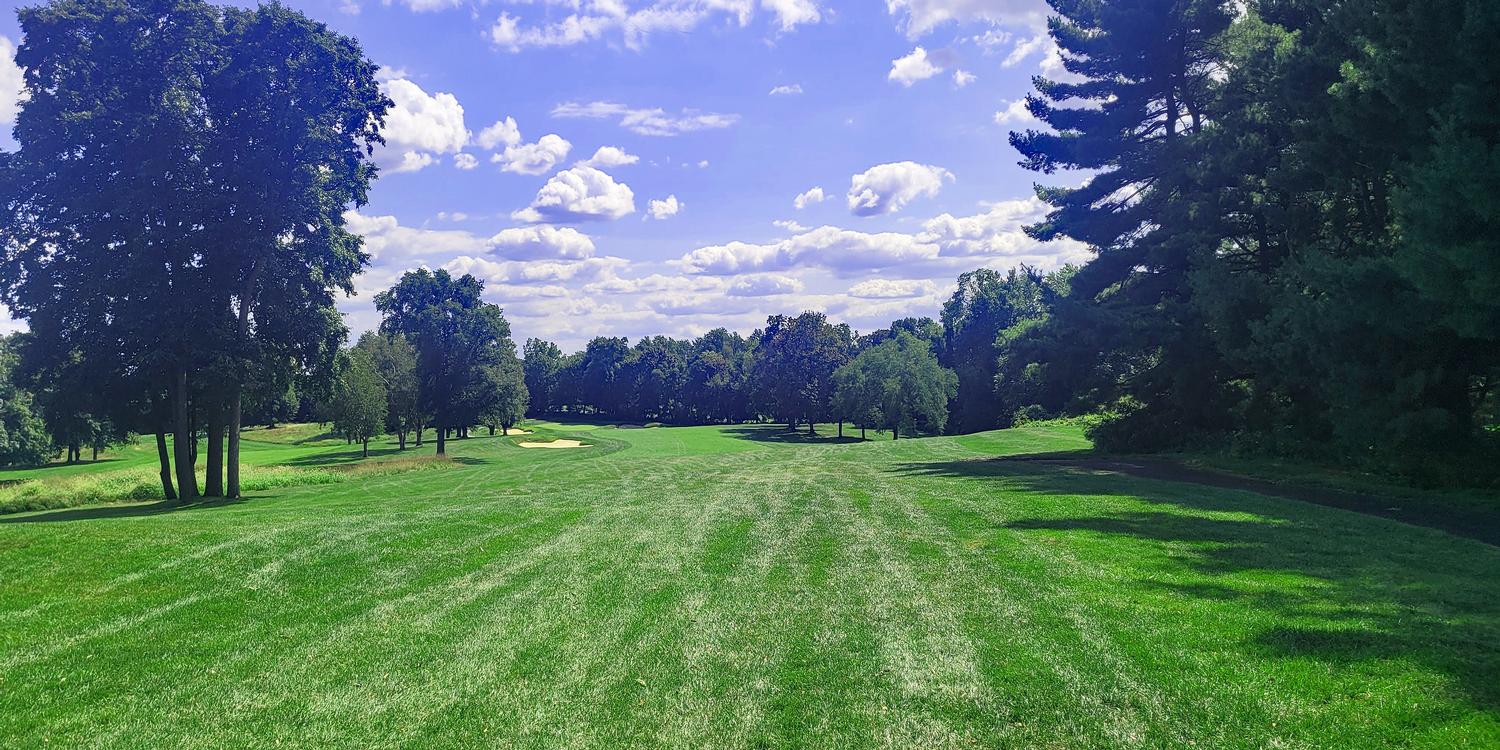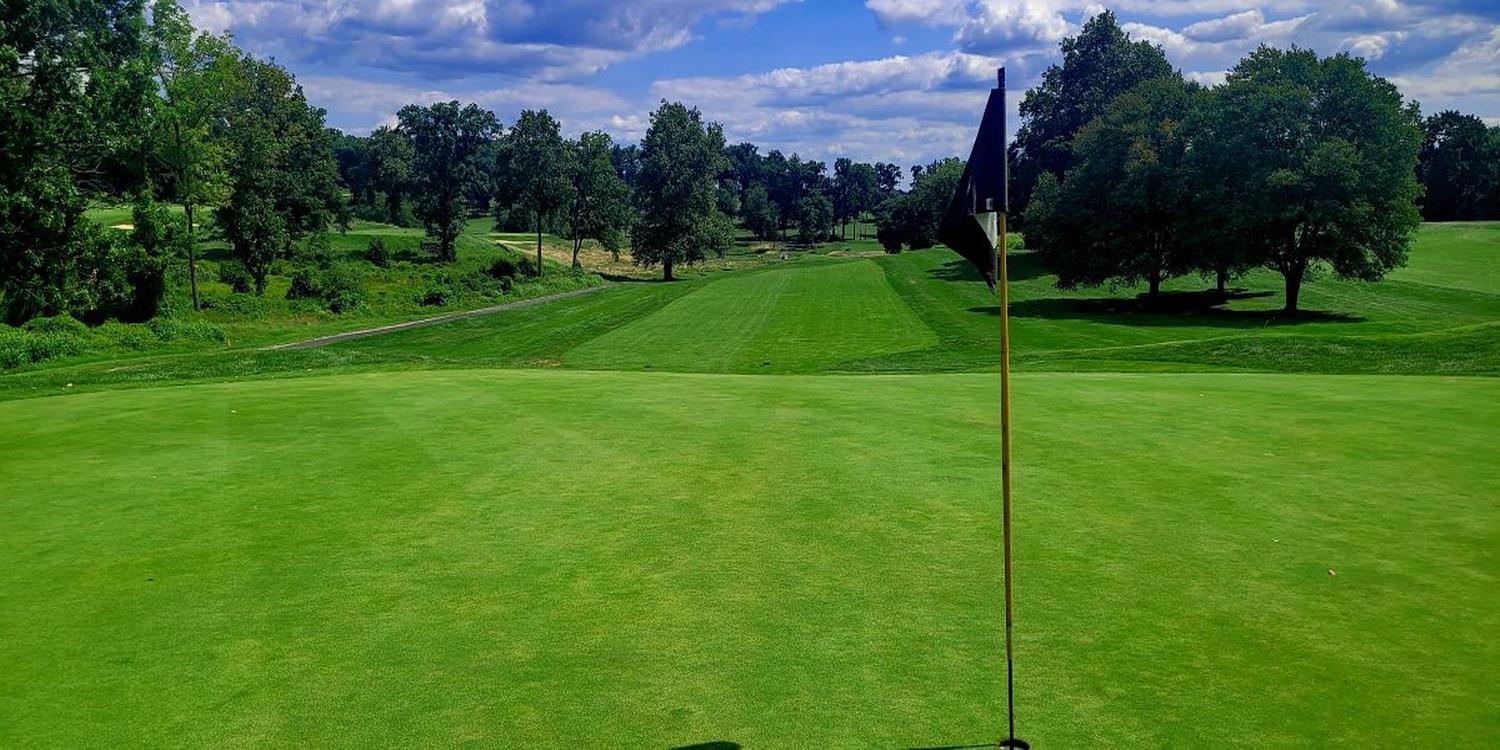Philmont Country Club
- Re-Establishing a Past Tradition
By David Theoret
In 1906, Mr. Ellis Gimbel, founder of Gimbel's Department Store, and a few other captains of commerce and industry in Philadelphia joined forces to create Philmont Country Club. Philmont just happened to be the name of the train stop nearest the club! With eight courts, tennis quickly became the most popular sport at Philmont, which also offered baseball, polo, and the pursuit of happiness through social interaction. Only two members of the club had played golf!
The club was an instant success, garnering 592 members in the first five months. The club's first golf pro, John Reid, designed a crude 9-hole layout to help get golf off the ground at Philmont. While the truth of who designed and built the 2nd nine remains a whodunit, recent findings related to the design and building of the South Course are attributed to Hugh Wilson, architect of Merion Golf Club.
As golf grew in popularity, the Members decided to add another 18 holes. Willie Park Jr. designed the layout, and the firm of Toomey and Flynn Contracting Engineers was hired to build this new championship course, which was longer and more challenging. In 1924, the North Course opened, making Philmont one of just five clubs in the country with 36 holes.
The glorious Philmont Country Club has been the mainstay of the Huntington Valley private club scene for over 100 years. This once all-Jewish club has morphed into a private country club with a family-oriented lifestyle, with activities, programs, and services to suit every member and guest. The Olympic-sized swimming pool sitting adjacent to the clubhouse was added in 1925 and hosted the A.A.U. National diving championships the following year.
Even with all of these wonderful amenities, the main attraction was golf. Philmont has hosted many legendary golfers over the years, including Walter Travis, Walter Hagen, Johnny Farrell, Ben Hogan, Gene Sarazen, and Babe Zaharias. It also served as a venue for the Nike Tour and as a qualifying site for the U.S. Open and U.S. Amateur Championships. It has hosted the Philadelphia Open more times than Merion.
As the game of golf evolved, a few changes were needed on the North Course. Park Jr.'s original routing was kept, as were the first 17 holes. The 18th hole was redesigned by Andrew Green, who lengthened the hole, relocated the green, and created a new green complex. He relied on historical course data to reposition many of the bunkers throughout the course, returning them to how Park Jr. meant them to be. The renovation of the North Course was completed in 2018.
A course that has been around for over 100 years should have mature trees, and Philmont is no exception. They are some of the largest, thickest trees I've ever seen. As you'd suspect, there are a lot of tree-lined fairways, and just about every other "quirk" you can think of. Bunkers, water hazards, blind shots, rolling terrain, forced carries, large greens, elevated greens, and false fronts make for a fun and challenging day as you play the course. No two holes are alike; each presents a fresh set of challenges.
Almost every hole on Philmont's North Course is memorable, but three stand out. The 2nd hole is a beautiful 392-yard par 4 and one of only a handful where water comes into play. It's a slight dogleg right and plays downhill with large mature trees on either side of the fairway. Playing your tee shot to the right will help avoid the greenside bunker on the left. Finding the fairway off the tee on this hole will go a long way in posting a good score; the rough is long and gnarly. A good drive will leave a mid-iron approach shot over a rock-faced pond into a green that slopes from back to front and is protected by the water in front and a lone bunker on the left.
The 9th hole to me is the most challenging and memorable hole at Philmont. It's a par 5 dogleg right that plays 560 yards from the White Tees. Calling it a dogleg doesn't do it justice; it's more like a right turn. If you look at an aerial view of the hole, it resembles a boomerang. You'll need accuracy and length off the tee as trees on either side create a narrow alley.
Several of Philmont's par fours will give you all you can handle from the White Tees. Number 14 is a monstrous 433-yard, dogleg right, par four that plays downhill off the tee and uphill the rest of the way. The fairway in the landing area is narrow, and a cluster of trees on the right at the bend keep you honest off the tee. A good drive will still leave a long approach shot into an elevated green with a large deep bunker front left and large grass swales in front. If the long approach shot is too much to handle and you decide to lay up, beware of the two fairway bunkers on the left just short of the green.
Philmont has some good practice facilities that will only get better after the current renovation projects are complete. There's a small practice range where you can hit up to 200-yard shots and a full short game area where you can practice shots up to 130 yards. You'll also find greenside and fairway bunkers. The large practice putting green rolls at the same speed as the greens on the course. In 2025, a new driving range will be unveiled.
Like many private clubs, Philmont fell on hard times. Members knew it was time to update and renovate other club amenities to keep up with competitors, but the funds weren't there. The board agreed to search for new owners who were willing to commit to a revitalization project. Enter Concert Golf Partners, a company very adept at revitalizing floundering clubs.
Shortly after purchasing the property, Concert Golf Partners undertook a $5M renovation project that was completed in 2019. It included the addition of a state-of-the-art fitness center and an HD golf simulator lounge that will be used year-round for both social and instructional golf experiences. The Olympic-sized swimming pool was resurfaced, making the pool area again the focal point of family activities. This is an important element necessary to grow the membership base in the highly competitive Philadelphia private club market. 2025 will also debut the new Tennis Center, with 4 tennis courts and 6 pickleball courts.
The clubhouse received a makeover, and although the exterior of the century-old building remained untouched, the interior of this 80,000-sq.-ft. complex received a major redesign. The ballroom, Founders Room, and lobby lounge were completely redone, and a renovated dining venue, the 1906 Grille.
Tournaments are a big part of Philmont's golf program and run from April through October. Breakfast tournaments, team matches, member-guests, league play, and couples championships are just a few. The golf staff takes pride in offering tournament programs that are competitive, yet fun, and develop camaraderie among the participants. Philmont's friendly and knowledgeable golf staff will ensure that your golf experience is memorable.
One way to play Philmont Country Club is to host an outing. Although daily play at Philmont is limited to members and their guests, they host a limited number of charity-sponsored outings and corporate golf events each year. The best way to play Philmont any time you like is to become a member, and Philmont Country Club offers membership programs to suit everyone. A Full Golf Membership gives you access to everything Philmont offers: the pool, fitness center, tennis courts, social/dining events, and, of course, the golf course and practice facilities. Executive Golf Memberships, Social Memberships, and Corporate Memberships are also available. And, as a Member of a Concert Golf Partners Club, you'll have the option to access other Concert Golf properties around the country with reciprocals similar to your home club. Check out the website for more information www.philmontcc.org.
Article Tags: Philmont Country Club, Huntington Valley's private golf clubs, Golf courses in Philadelphia, Golf courses in Pennsylvania
Revised: 07/02/2025 - Article Viewed 91 Times
About: David Theoret
![]() David Theoret has been in the golf and golf travel industry for over 10 years, primarily selling online advertising. For the past seven years, he has also been a golf writer, reviewing golf courses, resorts, destinations, equipment, golf apparel, and training aids - the latter of which never seems to help. David's articles and reviews have been posted on many golf travel and equipment websites.
David Theoret has been in the golf and golf travel industry for over 10 years, primarily selling online advertising. For the past seven years, he has also been a golf writer, reviewing golf courses, resorts, destinations, equipment, golf apparel, and training aids - the latter of which never seems to help. David's articles and reviews have been posted on many golf travel and equipment websites.
Growing up in Southwestern Ontario, Canada, it was naturally assumed he would play hockey. Beginning at the age of 3 and continuing into his late 30's, he did just that. However, after one too many pucks to the head, he realized that golf was a lot easier on the body (whoever said hockey players were slow) and took the game up.
After moving to Florida and accepting a position with TravelGolf Media (now part of GolfNow) his love for the game grew exponentially. Most Saturdays you will find him on a course somewhere in Florida or on the practice range reinforcing his bad habits. David plays to a 10 handicap - unless there is money involved in which case it goes considerably higher. He currently resides in Lakeland, FL with his wife Belinda and their two "kids", Madyson and Molly.
Contact David Theoret:
GolfTrips.com - Contributor








